Matthew Jackson
Reinforcement Learning Controllers for Soft Robots using Learned Environments
Oct 25, 2024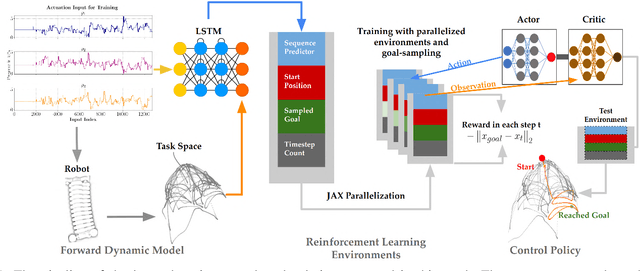
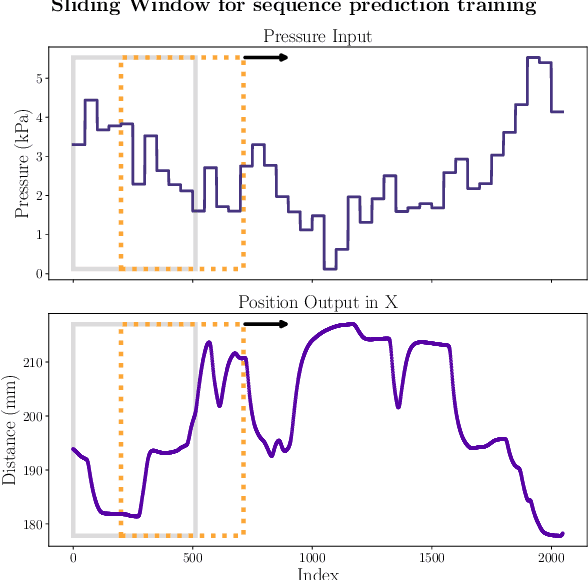
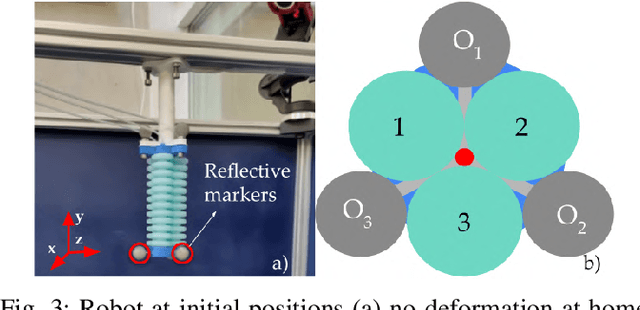

Abstract:Soft robotic manipulators offer operational advantage due to their compliant and deformable structures. However, their inherently nonlinear dynamics presents substantial challenges. Traditional analytical methods often depend on simplifying assumptions, while learning-based techniques can be computationally demanding and limit the control policies to existing data. This paper introduces a novel approach to soft robotic control, leveraging state-of-the-art policy gradient methods within parallelizable synthetic environments learned from data. We also propose a safety oriented actuation space exploration protocol via cascaded updates and weighted randomness. Specifically, our recurrent forward dynamics model is learned by generating a training dataset from a physically safe \textit{mean reverting} random walk in actuation space to explore the partially-observed state-space. We demonstrate a reinforcement learning approach towards closed-loop control through state-of-the-art actor-critic methods, which efficiently learn high-performance behaviour over long horizons. This approach removes the need for any knowledge regarding the robot's operation or capabilities and sets the stage for a comprehensive benchmarking tool in soft robotics control.
* soft manipulator, reinforcement learning, learned controllers
Towards Reinforcement Learning Controllers for Soft Robots using Learned Environments
Oct 24, 2024



Abstract:Soft robotic manipulators offer operational advantage due to their compliant and deformable structures. However, their inherently nonlinear dynamics presents substantial challenges. Traditional analytical methods often depend on simplifying assumptions, while learning-based techniques can be computationally demanding and limit the control policies to existing data. This paper introduces a novel approach to soft robotic control, leveraging state-of-the-art policy gradient methods within parallelizable synthetic environments learned from data. We also propose a safety oriented actuation space exploration protocol via cascaded updates and weighted randomness. Specifically, our recurrent forward dynamics model is learned by generating a training dataset from a physically safe \textit{mean reverting} random walk in actuation space to explore the partially-observed state-space. We demonstrate a reinforcement learning approach towards closed-loop control through state-of-the-art actor-critic methods, which efficiently learn high-performance behaviour over long horizons. This approach removes the need for any knowledge regarding the robot's operation or capabilities and sets the stage for a comprehensive benchmarking tool in soft robotics control.
* soft manipulator, reinforcement learning, learned controllers
Risks and Opportunities of Open-Source Generative AI
May 14, 2024



Abstract:Applications of Generative AI (Gen AI) are expected to revolutionize a number of different areas, ranging from science & medicine to education. The potential for these seismic changes has triggered a lively debate about the potential risks of the technology, and resulted in calls for tighter regulation, in particular from some of the major tech companies who are leading in AI development. This regulation is likely to put at risk the budding field of open-source generative AI. Using a three-stage framework for Gen AI development (near, mid and long-term), we analyze the risks and opportunities of open-source generative AI models with similar capabilities to the ones currently available (near to mid-term) and with greater capabilities (long-term). We argue that, overall, the benefits of open-source Gen AI outweigh its risks. As such, we encourage the open sourcing of models, training and evaluation data, and provide a set of recommendations and best practices for managing risks associated with open-source generative AI.
Near to Mid-term Risks and Opportunities of Open Source Generative AI
Apr 25, 2024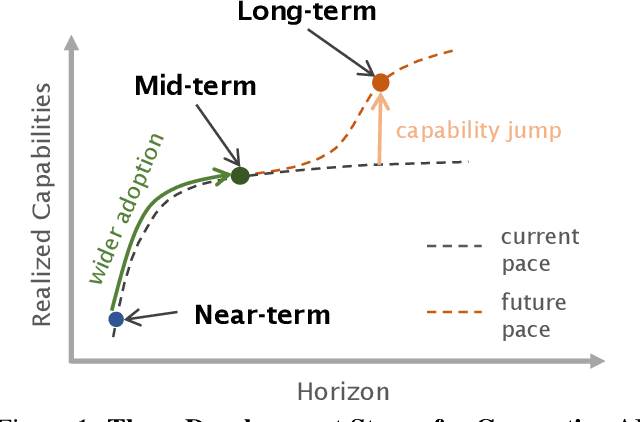
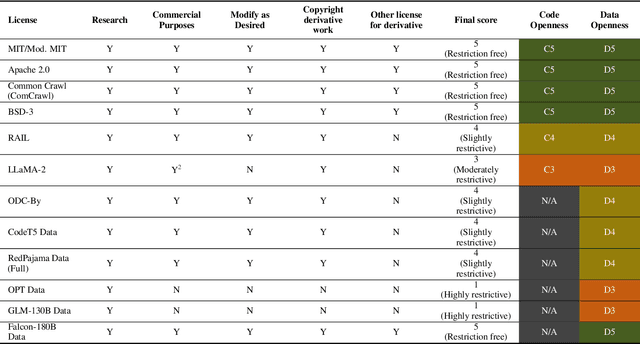
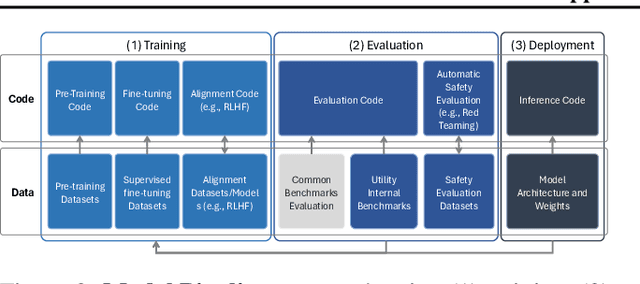
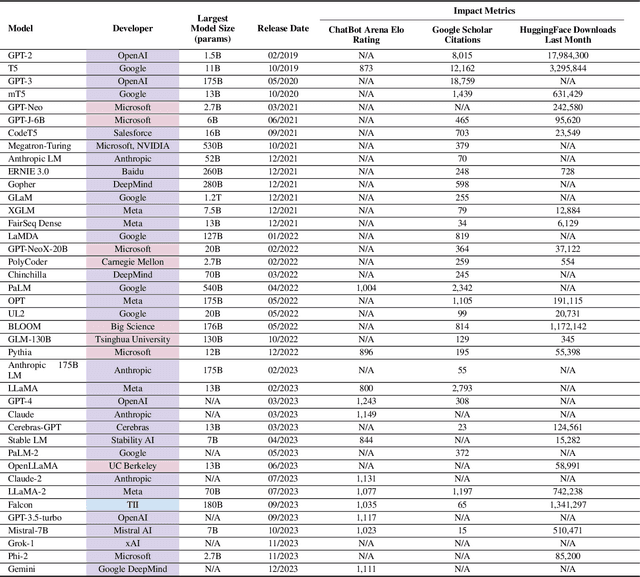
Abstract:In the next few years, applications of Generative AI are expected to revolutionize a number of different areas, ranging from science & medicine to education. The potential for these seismic changes has triggered a lively debate about potential risks and resulted in calls for tighter regulation, in particular from some of the major tech companies who are leading in AI development. This regulation is likely to put at risk the budding field of open source Generative AI. We argue for the responsible open sourcing of generative AI models in the near and medium term. To set the stage, we first introduce an AI openness taxonomy system and apply it to 40 current large language models. We then outline differential benefits and risks of open versus closed source AI and present potential risk mitigation, ranging from best practices to calls for technical and scientific contributions. We hope that this report will add a much needed missing voice to the current public discourse on near to mid-term AI safety and other societal impact.
SplAgger: Split Aggregation for Meta-Reinforcement Learning
Mar 08, 2024Abstract:A core ambition of reinforcement learning (RL) is the creation of agents capable of rapid learning in novel tasks. Meta-RL aims to achieve this by directly learning such agents. Black box methods do so by training off-the-shelf sequence models end-to-end. By contrast, task inference methods explicitly infer a posterior distribution over the unknown task, typically using distinct objectives and sequence models designed to enable task inference. Recent work has shown that task inference methods are not necessary for strong performance. However, it remains unclear whether task inference sequence models are beneficial even when task inference objectives are not. In this paper, we present strong evidence that task inference sequence models are still beneficial. In particular, we investigate sequence models with permutation invariant aggregation, which exploit the fact that, due to the Markov property, the task posterior does not depend on the order of data. We empirically confirm the advantage of permutation invariant sequence models without the use of task inference objectives. However, we also find, surprisingly, that there are multiple conditions under which permutation variance remains useful. Therefore, we propose SplAgger, which uses both permutation variant and invariant components to achieve the best of both worlds, outperforming all baselines on continuous control and memory environments.
Craftax: A Lightning-Fast Benchmark for Open-Ended Reinforcement Learning
Feb 26, 2024Abstract:Benchmarks play a crucial role in the development and analysis of reinforcement learning (RL) algorithms. We identify that existing benchmarks used for research into open-ended learning fall into one of two categories. Either they are too slow for meaningful research to be performed without enormous computational resources, like Crafter, NetHack and Minecraft, or they are not complex enough to pose a significant challenge, like Minigrid and Procgen. To remedy this, we first present Craftax-Classic: a ground-up rewrite of Crafter in JAX that runs up to 250x faster than the Python-native original. A run of PPO using 1 billion environment interactions finishes in under an hour using only a single GPU and averages 90% of the optimal reward. To provide a more compelling challenge we present the main Craftax benchmark, a significant extension of the Crafter mechanics with elements inspired from NetHack. Solving Craftax requires deep exploration, long term planning and memory, as well as continual adaptation to novel situations as more of the world is discovered. We show that existing methods including global and episodic exploration, as well as unsupervised environment design fail to make material progress on the benchmark. We believe that Craftax can for the first time allow researchers to experiment in a complex, open-ended environment with limited computational resources.
 Add to Chrome
Add to Chrome Add to Firefox
Add to Firefox Add to Edge
Add to Edge